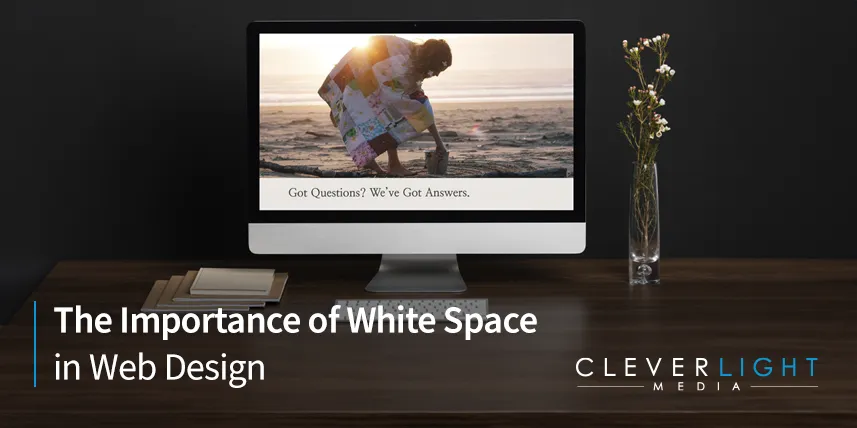As the digital landscape evolves, businesses need to stay ahead by designing websites that cater to the next generation of internet users—Gen Z. Born between the late 1990s and early 2010s, this tech-savvy demographic has grown up with the internet, social media, and mobile devices at their fingertips. To effectively capture their attention and keep them engaged, websites must be designed with their preferences and behaviors in mind. In this article, we’ll explore how understanding Gen Z’s online behavior, prioritizing mobile-first design, and integrating social media can help create an online experience that resonates with this younger audience.
Understanding Gen Z’s Online Behavior
Gen Z’s online behavior is shaped by their upbringing in a hyper-connected, digital world. Unlike previous generations, they have never known life without the internet, smartphones, or social media. This immersion in technology has influenced how they browse, shop, and engage with content online.
Here are key characteristics of Gen Z’s online behavior:
- Short Attention Spans: Gen Z is known for their ability to process large amounts of information quickly. However, this also means they have shorter attention spans, with research suggesting they can lose interest in content within 8 seconds. As a result, websites need to deliver value quickly with clear, engaging content.
- Preference for Visual Content: Gen Z prefers visual and interactive content over long blocks of text. They gravitate towards images, videos, infographics, and interactive features that keep them engaged and entertained.
- Mobile-First Users: Most Gen Z users access the internet primarily through their mobile devices. Websites that aren’t optimized for mobile will likely lose their attention, as they expect seamless mobile experiences.
- Values-Driven Engagement: This generation cares deeply about the values and ethics of the brands they engage with. Transparency, inclusivity, and sustainability are key factors that influence their purchasing decisions and brand loyalty.
- Social Media Integration: Gen Z uses social media not only for entertainment but also to discover and engage with brands. Integrating social platforms into your website is essential for capturing their attention and fostering engagement.
Mobile-First Design for Younger Audiences
Since Gen Z is predominantly mobile-first, designing a website with mobile functionality at the forefront is crucial for keeping this audience engaged. Mobile-first design ensures that your site not only looks good but also performs seamlessly on smartphones and tablets, providing a positive user experience.
Here are key tips for mobile-first design that cater to younger users:
- Responsive Design: A responsive design ensures that your website automatically adjusts to different screen sizes, providing an optimal experience on both mobile devices and desktops. This is essential for Gen Z, who expect a smooth transition from one device to another without disruptions.
- Simplified Navigation: Keep navigation intuitive and straightforward, especially on mobile devices. Use drop-down menus, collapsible sections, and touch-friendly elements to make browsing effortless.
- Fast Load Times: Younger users have little patience for slow-loading websites. Prioritize speed by optimizing images, reducing unnecessary code, and using reliable hosting. A mobile-first design should load quickly, even with limited data or slower connections.
- Thumb-Friendly Design: Make sure your mobile design is optimized for thumb navigation. Buttons, forms, and interactive elements should be easy to tap without requiring zooming or excessive scrolling.
- Minimalism with Impact: Clean, minimalistic designs resonate with Gen Z, but that doesn’t mean boring. Use bold visuals, dynamic typography, and striking imagery to make an impact without overwhelming the user.
Social Media Integration Tips
Gen Z spends a significant amount of time on social media platforms, making it crucial to integrate these channels into your website. Seamless integration allows younger users to engage with your brand across multiple platforms without leaving your site, enhancing user engagement and brand loyalty.
Here are key tips for effective social media integration:
- Embed Social Feeds: Display live feeds from your brand’s social media accounts directly on your website. This keeps your content fresh and encourages users to follow your brand across different platforms.
- Add Social Sharing Buttons: Enable users to share your website’s content (like blog posts or product pages) on their own social media profiles. This not only amplifies your reach but also turns your audience into brand advocates.
- Incorporate User-Generated Content (UGC): Feature UGC, such as customer photos, videos, or testimonials, from social media on your website. Gen Z values authenticity, and showcasing real customers creates a sense of community and trust.
- Use Social Login Options: Allow users to create accounts or log in to your site using their social media profiles (e.g., Facebook or Google). This reduces friction during the sign-up process and encourages users to stay connected.
Fast, Functional, and Fun: Key Elements for Younger Users
When designing a website for Gen Z, the experience needs to be fast, functional, and fun. This demographic expects websites to be user-friendly and engaging while also performing seamlessly across all devices.
Here’s how to make sure your website appeals to younger users:
- Speed is Key: Gen Z is used to instant gratification. Websites need to load quickly, with minimal delays. Optimize page speed by compressing images, leveraging browser caching, and using content delivery networks (CDNs).
- Interactive Features: Include interactive elements like quizzes, polls, and sliders that keep users engaged and entertained. The more interactive your website, the longer users will stay and explore.
- Clear Calls-to-Action (CTAs): Make your CTAs bold, clear, and actionable. Younger users respond well to direct prompts, so use language that encourages quick, decisive actions such as “Shop Now” or “Sign Up Today.”
- Gamification: Introduce elements of gamification, like rewards, badges, or points systems, to keep users coming back. Adding a sense of fun can significantly boost engagement with this audience.
- Visually Striking Design: Gen Z appreciates websites that are visually bold and modern. Use vibrant colors, dynamic typography, and eye-catching visuals to make your website stand out.
Engaging Gen Z with Innovative Content
To effectively capture and engage Gen Z, you’ll need more than just a functional website—you’ll need content that resonates with their values and interests. Here’s how to create content that keeps Gen Z users coming back for more:
- Short-Form Video Content: Gen Z loves video content, especially in short, digestible formats. Consider incorporating short video tutorials, product demos, or behind-the-scenes content to connect with your audience.
- Incorporate Influencer Marketing: Collaborating with influencers popular among younger audiences can drive significant traffic to your website. Feature influencer content or partnerships prominently on your site to build trust and authenticity.
- Create Shareable Content: Younger users love sharing content with their networks. Focus on producing content that is easily shareable, whether it’s through social media, email, or messaging platforms.
- Focus on Inclusivity and Social Responsibility: Gen Z places a high value on brands that demonstrate social responsibility and inclusivity. Make sure your content reflects these values, whether it’s highlighting sustainability efforts, diversity, or ethical practices.
- Real-Time Engagement: Encourage real-time interaction through live chats, Q&A sessions, or live-streamed events. This type of content is engaging and creates a sense of immediacy, which resonates with younger users.
Stay Ahead with a Gen Z-Friendly Website
Designing websites for the next generation of internet users requires a deep understanding of their online behavior, preferences, and expectations. By focusing on mobile-first design, integrating social media, and creating fast, functional, and fun experiences, you can connect with Gen Z in meaningful ways.
If you’re ready to create a website that captures the attention of younger audiences, we’re here to help. Contact us today to learn how we can help you design a site that’s optimized for the next generation of internet users.







